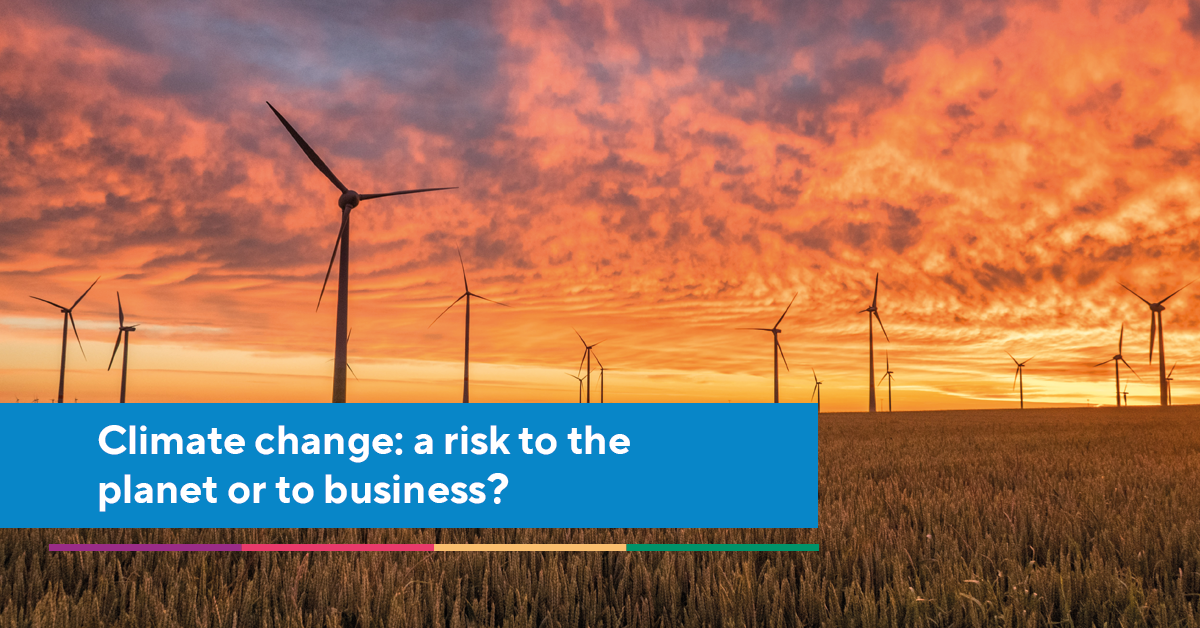It is no exaggeration to say we currently face a planetary emergency. As the clock ticks, the calendar days get crossed off, and the months roll by, our globally agreed climate targets inch closer and closer. Yet a sense of inertia permeates many discussions when it comes to combining sustainability and business strategy. Many companies (and postholders of strategic positions within those companies) are under pressure to do something but do not know where to start. This inhibits their ability to act.
Sustainability is broad, multifaceted, and surrounded with vast amounts of research, scientific data, and statistics. Corporate sustainability rhetoric is no better; the talk of plans, strategy, policy, reporting, standards, and legislation all contribute to the confusion and exclusivity of sustainability. This fuels the global lack of knowledge around sustainability as well as the hesitation to get involved.
Where do you start with sustainability in business?
Whenever we think about sustainability, a few topics spring to mind; predominantly carbon emissions, plastic, waste, human rights, and the protection of the natural environment. It is also no secret that the vast majority of a business’ footprint comes from their supply chain. For many companies, this accounts for around 80% of their climate impact, rendering it one of the most high-impact areas of focus for climate action. But can you say with 100% confidence where in your supply chain has the most environmental or social impact? Do you have an idea of how each issue might directly correlate to another?
Setting sustainability initiatives in motion
As net zero targets draw closer, carbon footprints are the centre of attention, with carbon accounting soon to become a legal requirement in some parts of the world. No business can claim to know their carbon footprint without calculating Scope 3 emissions - this means that is has now become crucial to engage suppliers around the topic of emissions and set realistic and achievable targets which reflect your suppliers’ capabilities.
“You cannot ignore the elephant in the room forever, especially those businesses who want to champion their green credentials”
– Cheryl Hall, industry expert for Supply Pilot Advisory Group and former Walgreens Boots Alliance Sustainability and Compliance Director
Having the ability to accurately measure supply chain emissions and then filter that data down to supplier and product level is going to be indispensable for businesses. It opens the door to competitive advantages such as carbon labelling and the ability to promote individual product sustainability. This is particularly crucial to building brand loyalty, as more and more consumers embrace sustainability when purchasing, as shown by Deloitte. The pursuit of individual product component certifications such as organic or RSPO are also made possible by an increased transparency of supply chain data.
When we think about individual product sustainability, packaging and plastic use have a part to play in the equation. As one of the world’s most consistent and persistent polluters, plastic secures its place as one of the top key areas of focus for many businesses. Whether it leads to projects around reducing plastic in packaging or increasing the recycled content, initiatives around plastic and packaging all begin with opening up a dialogue with suppliers. Doing so serves as a catalyst which sets everything else in motion, from conveying accurate information about degradability and recyclability of product packaging, to tackling waste, and collaborating on solutions to reduce plastic use.
The risk of not starting now
Plastic waste also presents a huge risk to our Earth’s ecosystems; it is not just about the pictures of sea life suffering at the fate of plastic straws, fishing nets, and six-pack rings. Tiny particles of degrading plastic waste (microplastics) have found their way into every nook and cranny accessible on Earth, and are even present in the blood of people alive today. This goes to show how interconnected something as seemingly innocent as a chocolate bar wrapper is to life on earth and biodiversity. The whole human economy is a subsidiary of the Earth’s systems, which means that anything which is a threat to biodiversity is a risk for businesses and their supply chains. Many businesses rely on natural resources such as agriculture or forestry for their profits – if these resources are at risk, so is the business. Corporate tree planting initiatives in isolation without addressing other key environmental and social issues is not going to cut it.
Another risk to biodiversity (and therefore our global agricultural systems) is the exposure to toxic chemicals, which currently contaminate thousands of ecosystems all over the world, not to mention the loss of millions of human lives every year. Whilst the use of chemicals is extremely beneficial to us and is integral to modern society, its magic is overshadowed by the industry’s heavy reliance on fossil fuels and production of toxic waste. These materials of concern are incredibly important to consider when it comes to futureproofing any kind of sustainability strategy. It is also important to be aware that we live in an increasingly volatile world, which means that you must ensure that key minerals and metals are sourced legally within your supply chain, and do not benefit armed conflict groups.
It is not just about the environment
Sustainability is such a broad topic which cannot just be defined by carbon, plastic, and trees. Environmental claims hold little credibility without also paying attention to social responsibility and its associated risks and compliance, which have already been touched upon briefly in this blog. The fact of the matter is, sustainability is about human lives too. In the past few years, many brand reputations have suffered at the critical hands of social media and end-customers for their approach (or lack thereof) to modern slavery, human rights violations, and fair pay within their supply chains. But without attaining transparency of labour practices across the whole supply chain, you are blind to where you need to exercise due diligence or support with training. Genuine accountability and the ability to map out areas of risk also become impossible.
Making what seems impossible today, inevitable tomorrow
The examples discussed do not make up an exhaustive list of all the topics, sub-topics, nuances, and niche areas of sustainability. However, exploring and understanding a selection of key environmental and social issues within the context of your whole supply chain is what can provide the foundations to a robust sustainability strategy. Engaging your suppliers in such a way across a range of different sustainability topics will also enable you to gain a holistic view of supplier maturity from which you can identify knowledge gaps which need addressing.
We recognise the lack of visibility, knowledge, and adequate data is what is holding you back. This is why we built our Kickstart Assessment, a quick and simple questionnaire which enables you to bring multiple environmental and social topics to the forefront of your supplier engagement activities. From there you are able to map out key areas of focus to inform a sustainability strategy comprised of high-impact projects.
Get in touch to see how we can help you launch (and accelerate) your sustainability journey.




